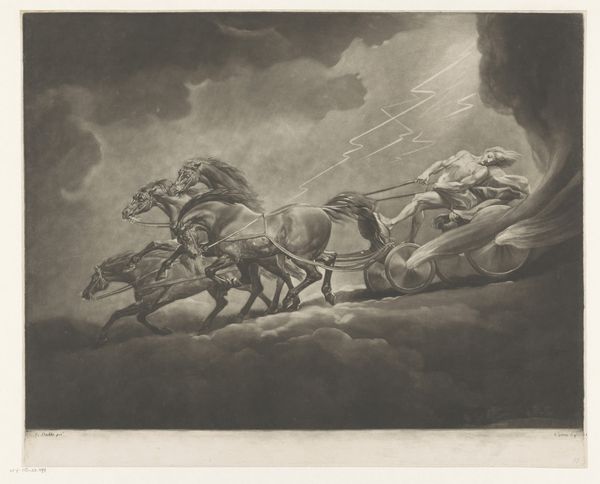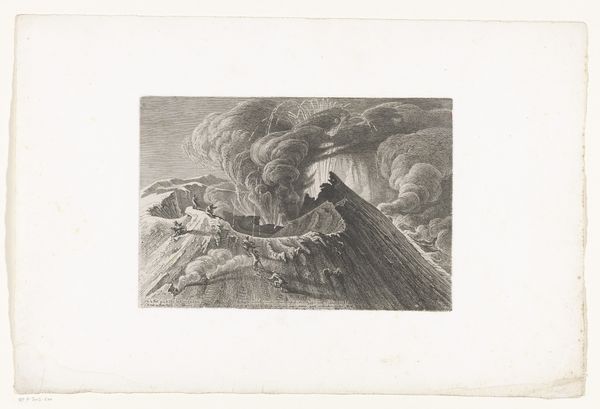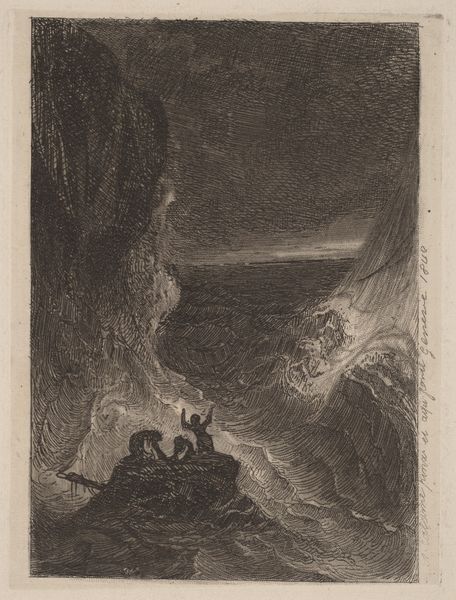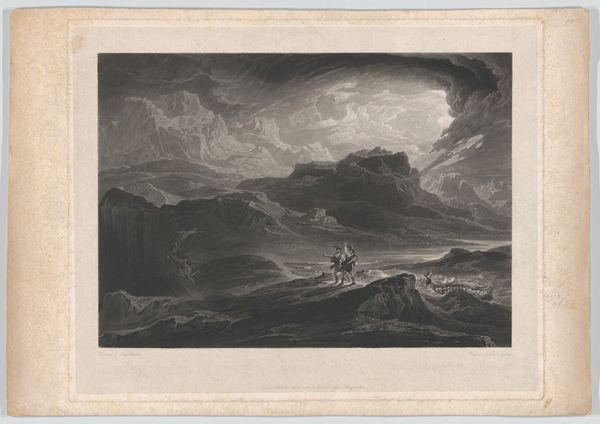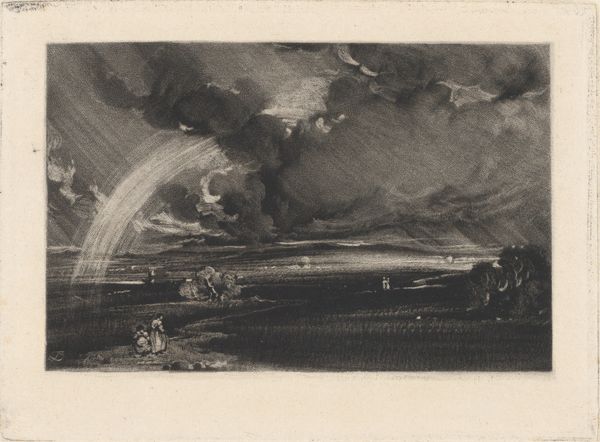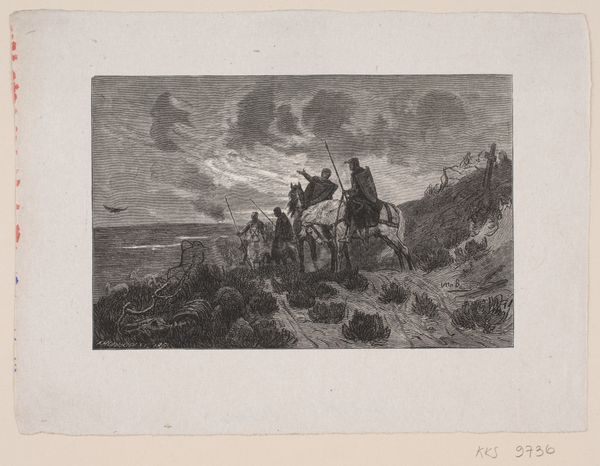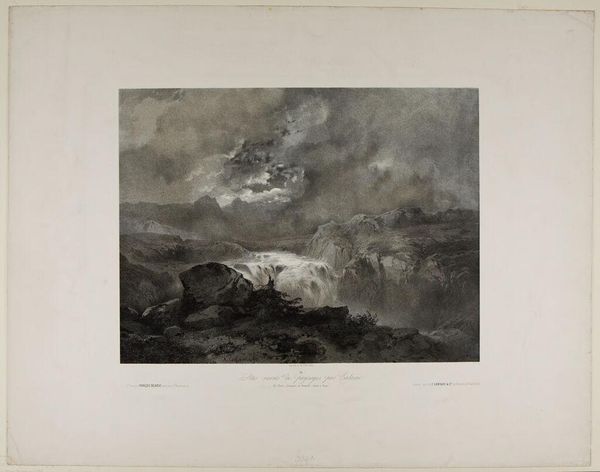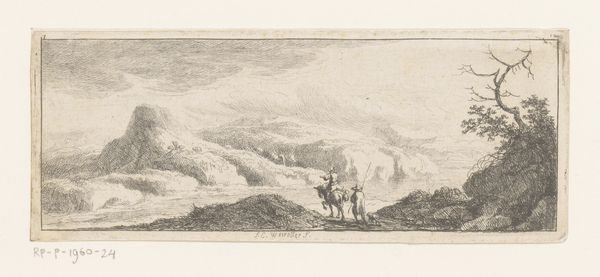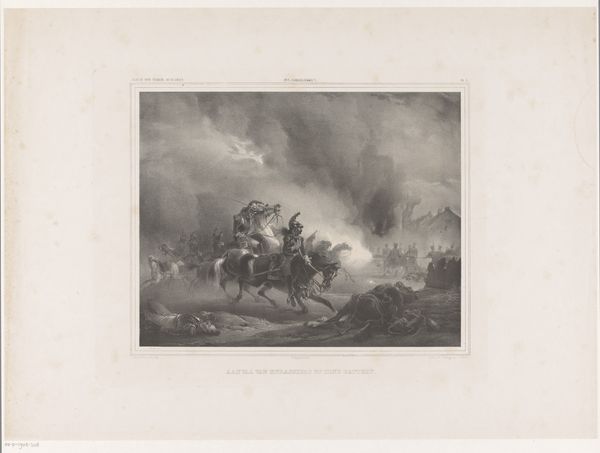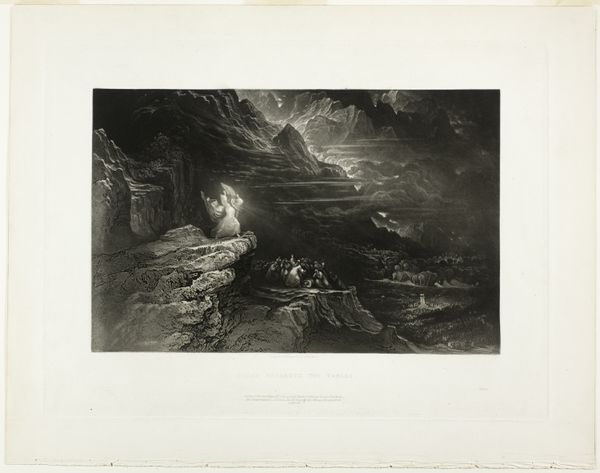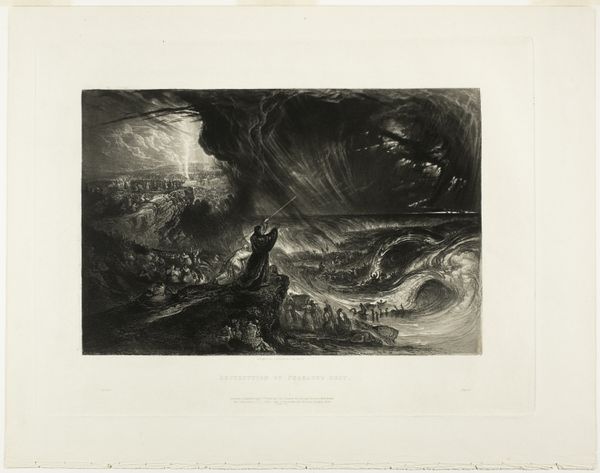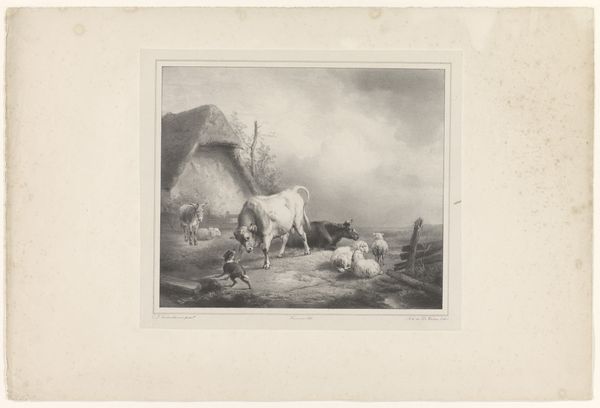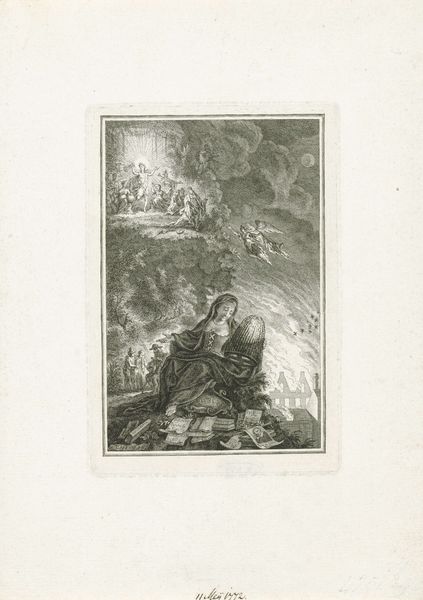
Dimensions: height 180 mm, width 235 mm
Copyright: Rijks Museum: Open Domain
Auguste Numans made this small print of a landscape with a dromedary in the mid-19th century, using etching. The process involves coating a metal plate with wax, then drawing through it with a sharp needle. Acid is applied, biting into the exposed metal to create lines that hold ink, before being printed onto paper. In this print, you can see the fineness of the etched lines, particularly in the sky, which create depth and texture, and capture the drama of the storm. Look closely and you will see the tiny dots and strokes that create a sense of light and shadow. This painstaking method would have required considerable skill, patience and labor. The social context is significant. As industrialization progressed, traditional crafts like etching became increasingly associated with artistry. The print's value lies not just in its aesthetic appeal, but in the labor and expertise required to produce it. This challenges the divisions between art and craft, high and low culture.
Comments
No comments
Be the first to comment and join the conversation on the ultimate creative platform.
